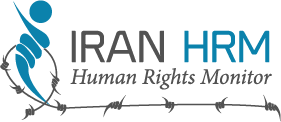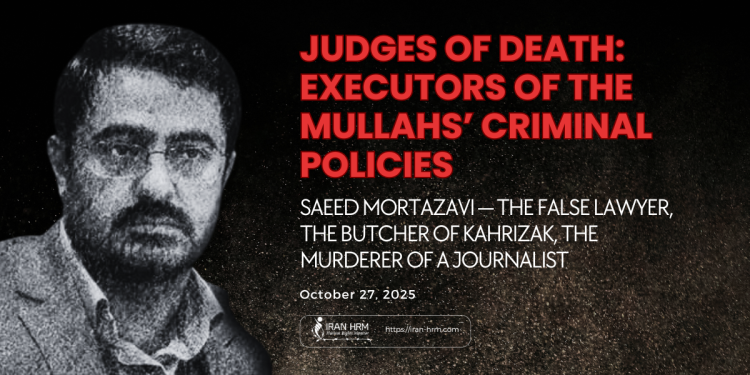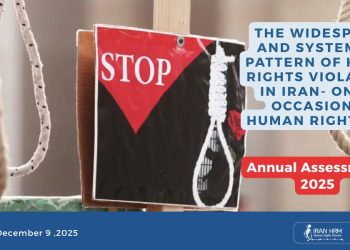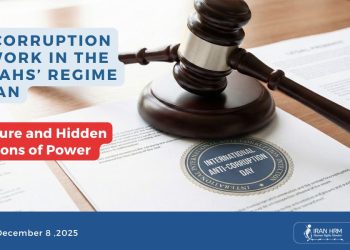Judges of Death: Executors of the Mullahs’ Criminal Policies
In the darkest decades of Iran’s modern history, the judiciary has not been a refuge for the oppressed but one of the most ruthless arms of the regime’s religious–authoritarian repression. The judiciary, which should safeguard justice, liberty, and human dignity, has for over four decades turned into a field of lawlessness and systemic violence — a cruel instrument to silence critics, political opponents, religious and ethnic minorities, intellectuals, and artists. In this system, judges are not representatives of the law but unquestioning enforcers of the Supreme Leader’s will. Those who were supposed to protect justice have instead wielded the blade against the people. These are the individuals rightly remembered in the collective memory of Iranians as the “Judges of Death.”
In the preamble to the regime’s Constitution, the judiciary is defined as follows:
“The issue of the judiciary, in relation to safeguarding the rights of the people within the Islamic movement and to prevent possible deviations within the Islamic Ummah, is of vital importance. Therefore, the establishment of a judicial system based on Islamic justice, composed of righteous judges acquainted with precise religious principles, has been envisaged. Due to its fundamental sensitivity and its necessity to remain true to Islamic doctrine, this system must be kept free from all forms of unhealthy relations and corruption. (And when you judge between people, judge with justice.)”
The purpose of this series of reports is to expose the mechanics of that power: how the policy of crime becomes institutionalized, how perpetrators are rewarded, and why they are never held accountable. The first report focuses on Saeed Mortazavi, the former Tehran Prosecutor, whose name is synonymous with the closure of newspapers, torture of detainees, and the killing of journalists — a man who stained justice with blood and became one of the world’s most infamous symbols of judicial repression.
Analytical Introduction
Saeed Mortazavi, one of the darkest figures in Iran’s judicial history, embodies the complete fusion of political power and judicial repression. He is not merely an errant judge, but a product of a system that subordinates justice to political will. From the mass closure of newspapers to the torture and killing of Zahra Kazemi, a Canadian-Iranian journalist, Mortazavi consistently used the law as an instrument of fear and suppression.
Recently, he reappeared under the absurd title of a “trainee lawyer,” mocking justice itself by joining the Yazd Bar Association — the very institution meant to uphold legal integrity. This is the same man responsible for torture and killings at Kahrizak detention center and for embezzlement at the Social Security Organization. In public memory, he remains branded as “the Butcher of the Press” and “the Executioner of the Tehran Prosecutor’s Office.”
Rise of an Executioner: From Young Judge to Tehran Prosecutor
Born on November 26, 1967, in Taft, Yazd Province, Mortazavi became a judge before turning thirty. Backed by senior regime figures like Mohammad Yazdi (then Head of the Judiciary) and Asadollah Badamchian (a leading member of the hardline Motalefeh Party), he was appointed in 1994 to head Branch 1410 of the Government Employees Court — the notorious Press Court. From the outset, he confused “judging” with “security enforcement.” His trials resembled political interrogations; journalists were insulted and threatened, often denied legal counsel.
In 2003, on direct orders from Ali Khamenei, Mortazavi became Tehran’s Prosecutor General, gaining control over Evin Prison and the judiciary’s security branches. His task was not to apply the law, but to extinguish dissent. In the clerical regime’s judiciary, political loyalty replaces legal competence; Mortazavi’s brutality and blind obedience ensured his rise — a model later replicated by many others.
The Black Decade of Censorship (2000–2009)
Following Khamenei’s 2000 sermon labeling newspapers as “enemy bases,” Mortazavi was tasked with silencing the press. Within weeks, over 120 publications were shut down and more than 250 journalists arrested or prosecuted. Charges ranged from “propaganda against the regime” to “espionage,” but the real goal was to annihilate independent journalism. Mortazavi abused an outdated law — the 1959 Law on Preventive Measures — to close publications, demonstrating that the judiciary had become a weapon of censorship.
During interrogations, he personally threatened journalists: “If you don’t confess, you’ll have an accident or disappear.” By the end of that decade, almost no independent media remained. Even reformist MPs admitted: “The Tehran Prosecutor has become the nation’s chief censor.” From that period, Mortazavi earned his lasting title — the Butcher of the Press.
The Zahra Kazemi Case — A Journalist Murdered Under Mortazavi’s Orders
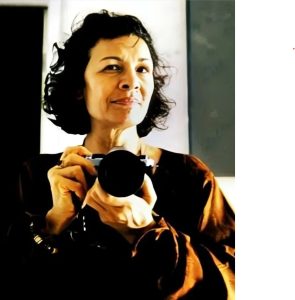 Zahra Kazemi, a Canadian-Iranian journalist, was arrested in July 2003 while photographing families of detained students outside Evin Prison. Mortazavi personally oversaw her early interrogations. According to medical and eyewitness testimony, Kazemi was subjected to both physical and psychological torture during the first hours of detention. Three days later, she died at Baghiatollah Hospital from a skull fracture and brain hemorrhage caused by a severe blow.
Zahra Kazemi, a Canadian-Iranian journalist, was arrested in July 2003 while photographing families of detained students outside Evin Prison. Mortazavi personally oversaw her early interrogations. According to medical and eyewitness testimony, Kazemi was subjected to both physical and psychological torture during the first hours of detention. Three days later, she died at Baghiatollah Hospital from a skull fracture and brain hemorrhage caused by a severe blow.
Despite the overwhelming evidence, Mortazavi attempted to reframe the case as a “security issue.” Former Intelligence Minister Ali Younesi later revealed: “We told Mortazavi she was not a spy, but he insisted on treating it as a security case.” Dr. Shahram Azam, the examining physician, later testified abroad that Kazemi’s body bore clear signs of torture. Her mother also confirmed that her daughter’s body was bruised and swollen when returned. Following her death, Canada suspended diplomatic relations with Tehran and officially held Mortazavi responsible. Inside Iran, a low-ranking officer was scapegoated and acquitted, and the case was swiftly closed.
International Reactions and Domestic Exposures
The murder of Zahra Kazemi triggered worldwide outrage. In 2010, the U.S. Treasury Department sanctioned Mortazavi for “gross and repeated human rights violations.” The Canadian government classified Kazemi’s case as an example of custodial killing and a violation of Article 6 of the International Covenant on Civil and Political Rights. The European Union (2011) also sanctioned Mortazavi for his “direct role in torture and killings of detainees.” Amnesty International called the murder of Zahra Kazemi “a symbol of silencing women journalists in Iran.” Within Iran, figures like Ali Motahari and Ahmad Tavakoli publicly denounced Mortazavi’s actions as “a disgrace to the judiciary.”
Conclusion
In less than a decade, Saeed Mortazavi destroyed freedom of expression and buried justice. He did not err — he embodied the path itself: the transformation of law into an instrument of terror. The case of Zahra Kazemi stands as evidence that within the regime of Velayat-e Faqih, a judge can become a murderer and a prosecutor a torturer.
From the closure of newspapers to the killing of journalists, Mortazavi personifies a judiciary that wields the law not to protect humanity but to preserve tyranny. This report is only the first half of his record. In the next part, we will examine how the same executioner — in the Kahrizak tragedy — evolved from murdering journalists to torturing and killing protesters, and how he was later rewarded with a pardon and a lawyer’s license, symbolizing absolute impunity within the regime’s judicial system.
